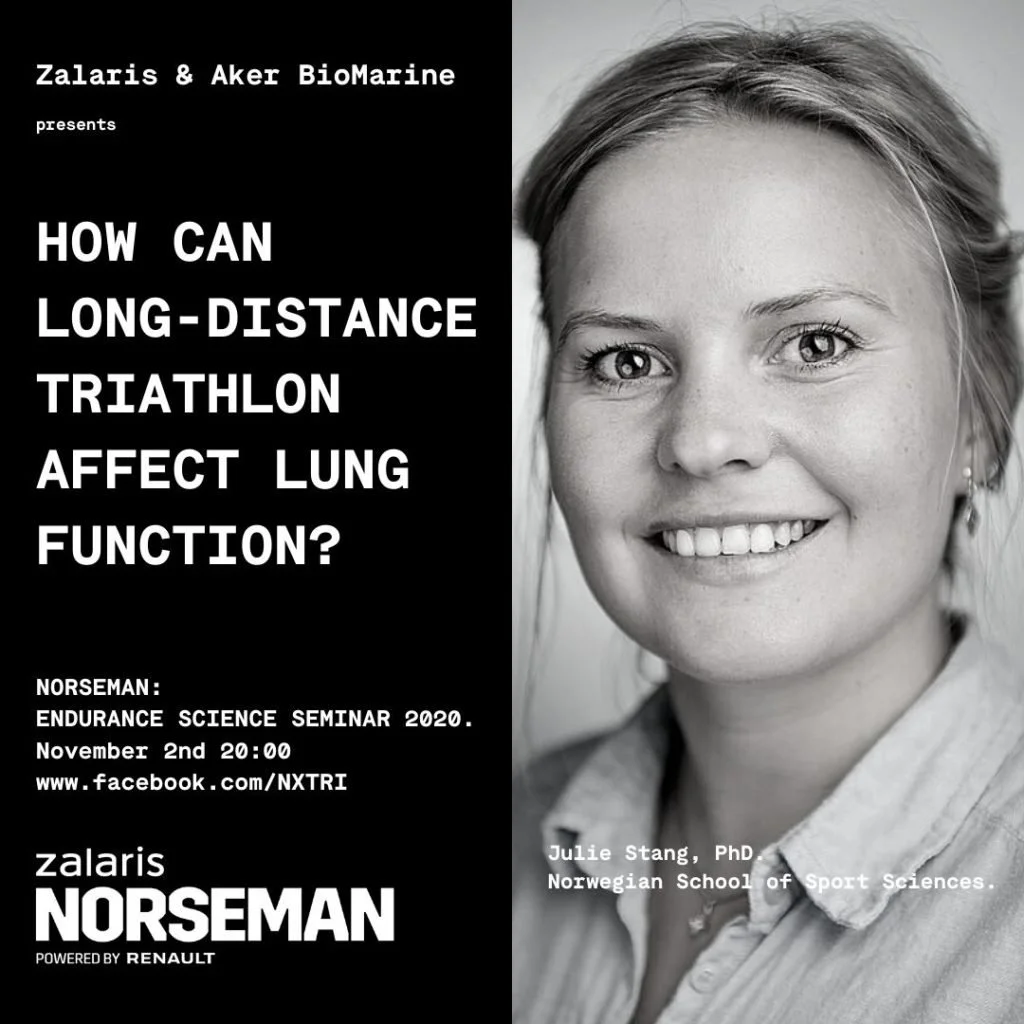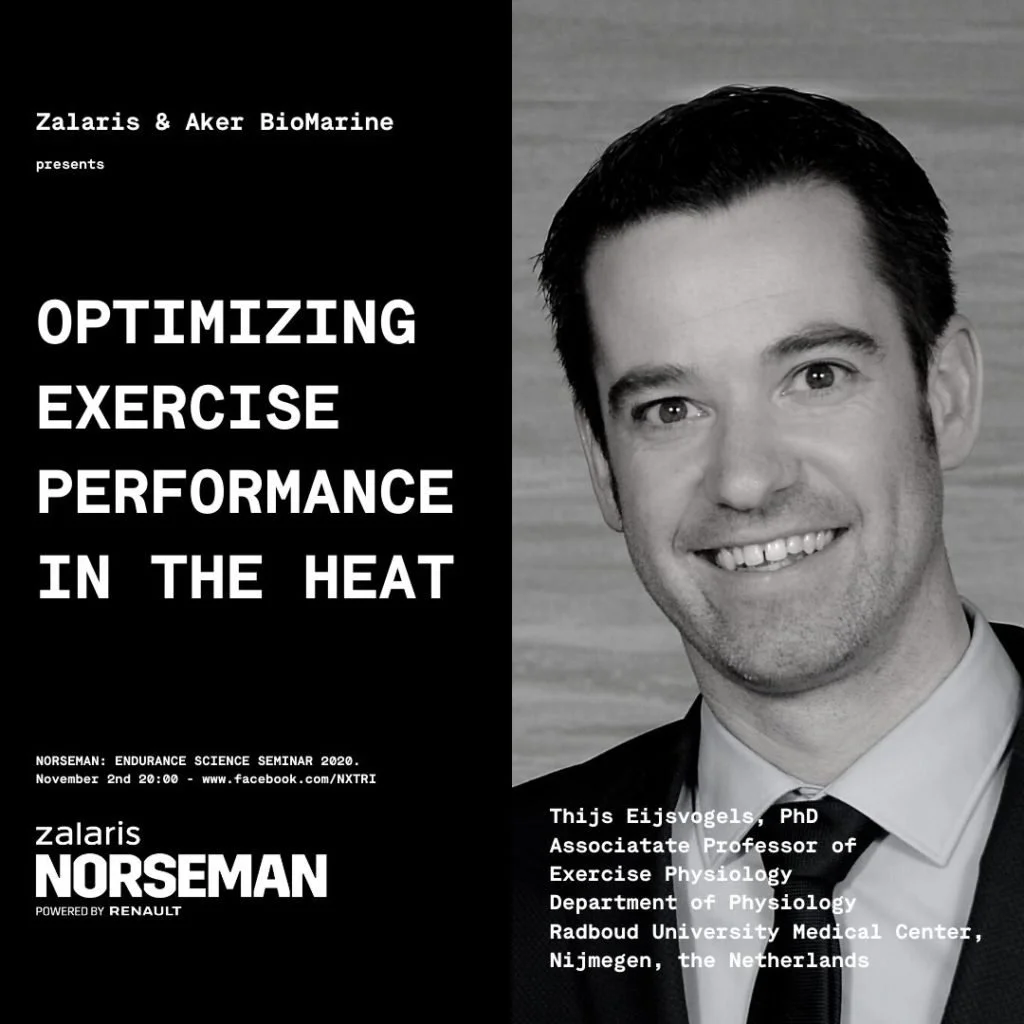Norseman: Endurance Science Seminar
On Monday November 2nd, 2020 we brought scientists together from all over the world to help you become a better and safer athlete. The seminar was presented by Zalaris & Aker BioMarine.
Below you will find the subjects our very knowledgeable sports scientists discussed during the seminar.
All the seminar lectures are individually available here. Or click the upper right corner in the video window above to find the full playlist from the seminar.
The sessions:
Swimming in Warm Water: Core Temperature Consequences of Wearing a Wetsuit.
Dr. Mercer discussed the results of an experiment investigating the influence of wearing a wetsuit on core temperature during a 1000 m swim in 25.5 C water as compared to not wearing a wetsuit. Using a telemetry core temperature system, it was determined that there was no influence of wearing a wetsuit on average core temperature, change in core temperature, or rate of change of core temperature. Subjects (n=5) all swam faster with the wetsuit but used the same stroke rate as compared to swimming without a wetsuit.
How can Long-Distance Triathlon Affect Lung Function?
Exercise induced asthma is more common in endurance athletes than the regular population, in particular in swimmers and winter sport athletes. During Norseman Xtreme Triathlon, we measured lung function in participants on three occasions: the day before the race, immediately after the race and 12-18 hours after finishing. In this talk, I will present the results from this study, as well as explain our theories of the physiological mechanisms: what happens in the lungs after such an extreme exposure.
Extreme Races: The Search for Superlatives. About the Development in Triathlon.
In public perception, triathlon is associated with extreme physical performance. Within the scene, the tendency of getting more attached and committed to the sport can be observed, developing to a more extreme level, nowadays often resulting in the participation of so-called Xtreme Triathlons. This development shows aspects of distinction from other long distance races by adding significant elevation to the tracks, limited slots which are given out in a raffle and special self-organized support. These aspects trigger the exclusiveness of triathlon not only in terms of physical performance, but also by the whole setup of the competition. The trend to compete in (ever) more extreme events also shows a need. While extreme triathlons and the participating athletes mutually drive the development of the field, unintended influences of more mainstream triathlon can be identified.
Optimizing Exercise Performance in the Heat.
Dr. Eijsvogels explained the principles of human thermophysiology and discussed how exercise affects health and performance, especially under hot and humid conditions. In the second part of his talk, he provided recommendations on how to beat the heat. Practical advice on heat acclimation/ acclimatization, assessing heat stress levels, adopting cooling strategies and hydration prior to and during exercise were given. This way, you can boost your performance during your next race in the heat!
Effects of Krill Oil and Race Distance on Serum Choline and Choline Metabolites in Triathletes.
Choline is an essential nutrient that has been implicated in sports performance due to its role in ensuring optimal muscle functioning. In this field study, we investigated for the first time the effects of supplementation with krill oil, a rich source of phosphatidylcholine, on serum levels of choline and its metabolites in athletes competing in triathlons of varying distances, including the Norseman Xtreme triathlon. Our results suggest that the magnitude of reduction in choline is dependent on race distance and that consumption of krill oil prior to endurance competitions may increase levels of circulating choline in athletes.
Biochemical Markers after the Norseman Xtreme Triathlon.
In extreme exercise, the physiology of the human body is pushed to the extreme. During Norseman Xtreme Triathlon we have studied changes in the blood. We have measured clinical biomarkers used by doctors in the emergency room and at medical checkups.
We find that most of the biomarkers are changed after the race and some are changed to the extreme – to levels associated with serious disease under normal circumstances. We find increased biomarkers associated with cell damage (CK, AST), inflammation (WBC, CRP), and heart failure (NtproBNP). This is vital information for doctors treating athletes from extreme exercise events in cases of accidents or other illnesses. And it gives us important knowledge of the extremes the human body can endure.
Seminar Introduction and some Cold Water Swimming.
Jørgen Melau explained how the Norseman research group started their research at Norseman and how it progressed into a large research project with multiple sub-projects. He also gave an overview of what is going on in the research group.
Additionally he presented a brief summary of his research on Cold Water Swimming and temperature physiology.







